Recently listed as one of Instagram’s Top 7 Women in STEM, software engineer and content creator Estefannie talks to Alex Bate about electronics, her online community, and why she can’t stop giving away free tech in her Instagram Live streams.
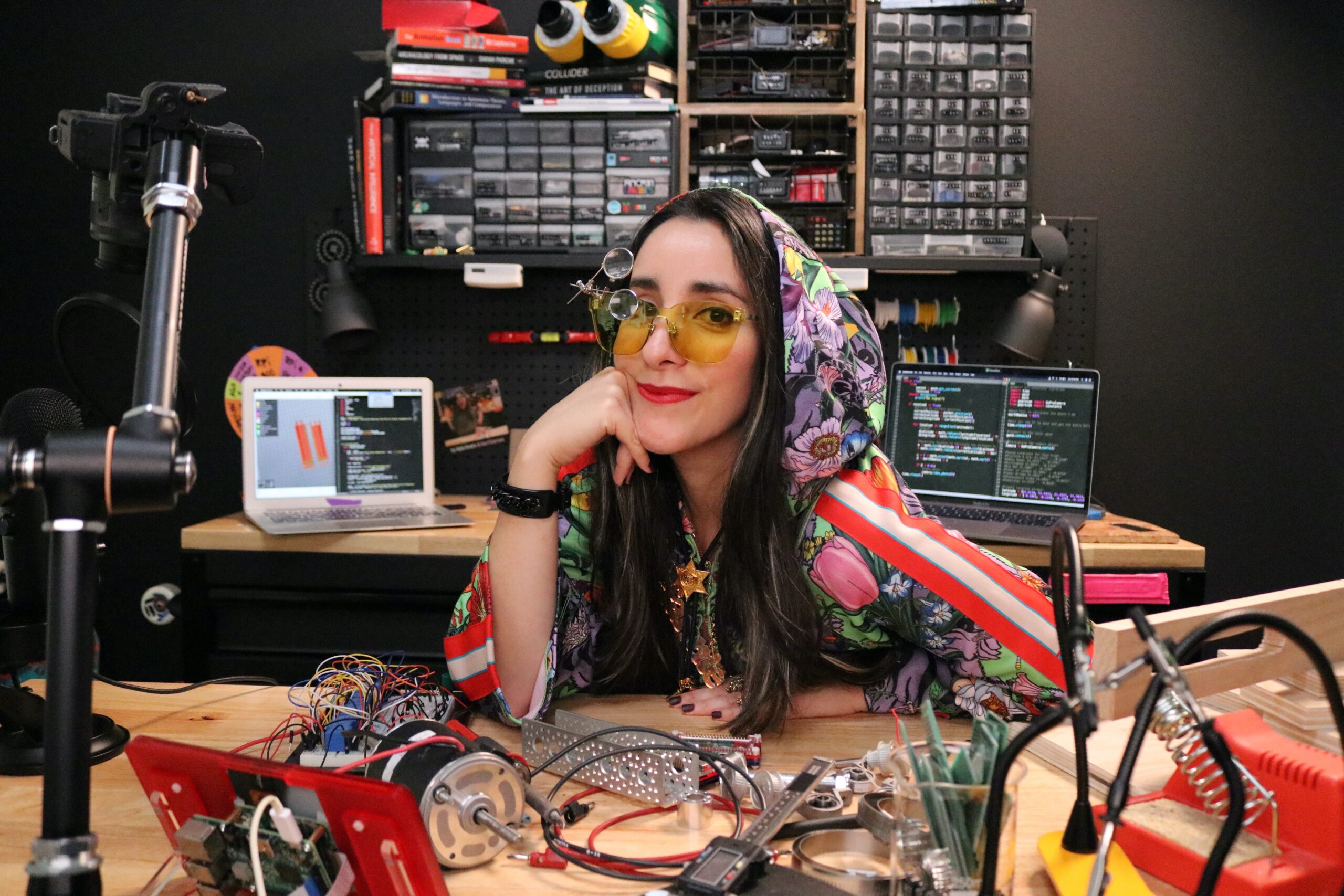
Based in Texas, Mexican-born Estefannie graduated summa cum laude from the University of Houston with a degree in computer science and a passion for helping people discover computing.
Some years later, with an established career as a software engineer under her belt, Estefannie is best-known for her YouTube and Instagram accounts, Estefannie Explains It All, and can often be found with a soldering iron in one hand, a rescue cat in the other, all while sporting the most fabulous pair of circuit board Louboutin heels and laser-cut lightning bolt earrings. Yes, it’s fair to say that we all want to be Estefannie. But how did she get here?
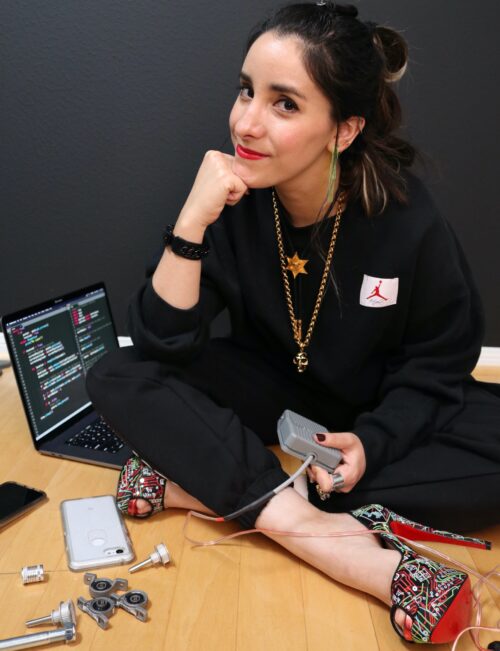
Alex You originally made videos on your channel four years ago to make sure that you’d retained the information that you were learning at the time?
Estefannie Mm-hmm, that’s right.
A But why did you decide to move away from the early explainers and start making other types of content, such as your Daft Punk helmet, and running weekly live streams and giveaways? Because I’m assuming that when you were making those early Estefannie Explains It All videos, you didn’t plan on becoming an influencer?
E No. The influencer part? Oh, no. I was studying for an interview with Google and I decided to make explainer videos and put them online because I knew people would correct me if I was wrong. And, if they didn’t, I knew my explanations were correct and I was better prepared for the interview.
The YouTube comments section was the scariest place on earth for me, so that’s why I went for YouTube.Later on, it was close to Halloween, and I was about to have an interview with Microsoft, this time to be a product evangelist. And I knew that IoT, the Internet of Things, was ‘the latest buzzword’, and I already wanted to dabble with that technology. So, I decided I wanted to make an IoT project and put it on my YouTube channel. That way, when the Microsoft interview arrived, I’d also have that video to show.
Halloween happened and I’d made this stupid pumpkin robot thing that wasn’t even IoT, but I put it on YouTube anyway and realised that I’d really liked doing it. I really, really liked it. And that’s when I found out about Simone Giertz and other makers, and this whole world I hadn’t known about. I thought, ‘I really like doing this, so I’m going to keep doing it.’ I didn’t even care about the interview anymore because I had found ‘the thing’, the thing that I wanted to do.
Microsoft actually loved the video and they wanted me to keep doing more of them, but on their platform, and they would own the content, which I didn’t want. So that’s how it transformed from explainers as prep for interviews to wanting to make videos. And the influencer thing happened a little bit differently. It’s a bit more Instagram-my.
-

Estefannie’s Daft Punk helmet finished… -

…and during the build process
A It’s more personal. You’re creating a brand.
E A brand, yes, I think that’s the key. So the Instagram thing happened for two reasons. The first one was that, before YouTube, I was going to start a business making little video games and mobile apps. And I decided to make it an ‘umbrella’ business so that anything I made could go under there. Because I thought [she laughs], ‘they’re going to go viral and so I need to be prepared legally.’
And while I was doing all of the business stuff, I realised I also need to learn how to do social media, because I need to promote these video games. So I took the time to understand Instagram, follow the people that I thought were interesting or would be doing the same stuff as me. I started out with my personal account as a test and, again, I really liked it. I started seeing people follow me because they were interested in the lifestyle of a software engineer. And I thought it was cool because I would have liked to see how software engineering was as a career before going for it. It was like a window to that world.
A Do you think there’s been a change, though, because your brand was that you were a software engineer? And now you’re not in the same job. You’re a full-time creator now. Do you think that’s affected who follows you and how people interact with you?
E I was very afraid of that when I quit my job. I tried to not talk about it at first. But it didn’t really matter because the people who have followed along, they’ve seen all the changes. And when I quit my job, they congratulated me because I was now able to do this full-time. So it was like the opposite. They were following ‘The Estefannie Experience’, ha ha. For a lot of them, it was like, ‘Oh, that’s another cool path that you can take as an engineer.’
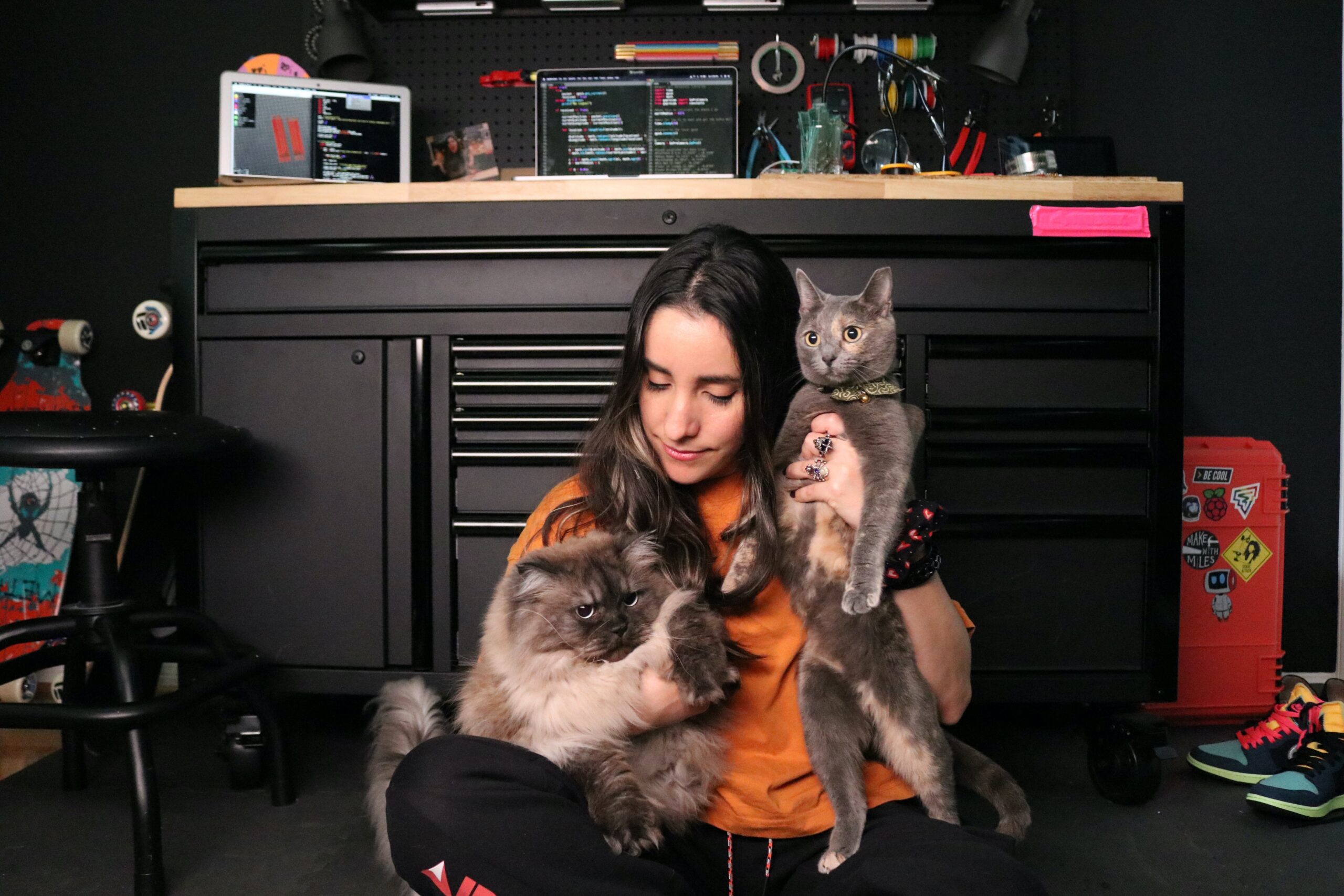
A What was it like to make the leap from software, from something you can control totally to hardware, an area where things can go wrong all the time?
E Oh, well, software can go wrong all the time, too. When I did that first Halloween pumpkin video, I think that really sparked a new interest in me of like, ‘Oh, I should have studied electrical engineering or computer engineering’. Because I am really passionate about the hardware aspect of it. I’d studied a low-level class as part of my computer science degree about gates and how they work. I remember having to draw them out.
And I really liked that class and understanding how electricity goes through those gates. But it didn’t matter because I was there to learn how to do the programming part. With electronics, it was so fun to go back and actually try it, and I was hurting myself, shocking myself, burning myself. It was great; I love it. It was like I was putting everything in my imagination into real, physical things. And I think that helps me. I like seeing things or touching things.
A You’re a big advocate for celebrating failure and learning from failure. You’ve done talks about it at Coolest Projects and Maker Faire, and you talk about it in your videos. In the earthquake simulator you built for Becky Stern, you showed the first way of making it and how it didn’t work, before showing the final project. Do you think it’s important to share failures on YouTube, instead of editing a perfect project build?
E I think so. Yes. It comes from a place within me where, when I wasn’t good at something when I tried it for the first time – I’m a nineties kid, I don’t know if this is anything to do with it – but you try, and you fail, and you just assumed ‘OK, I’m not good at it.’ I’m not supposed to be playing piano, or whatever. That’s how I grew up thinking. And so, when I became an actual engineer, and I say ‘engineer’ because studying computer science is one thing, but to become an engineer is something completely different.
And when I actually became an engineer, that’s when it hit me that you have to really just go for it, stop thinking, stop planning, stop analysing, and just do it and see what happens, and learn from that.So that was a great lesson in life for me, and I want to show people like me that I make mistakes all the time and that I struggle sometimes, or that it takes several steps; it takes several tries to get somewhere. And so I want to show it for those people who feel maybe like they can’t do something because they didn’t do it the first time. I want to show them the human side of engineering.
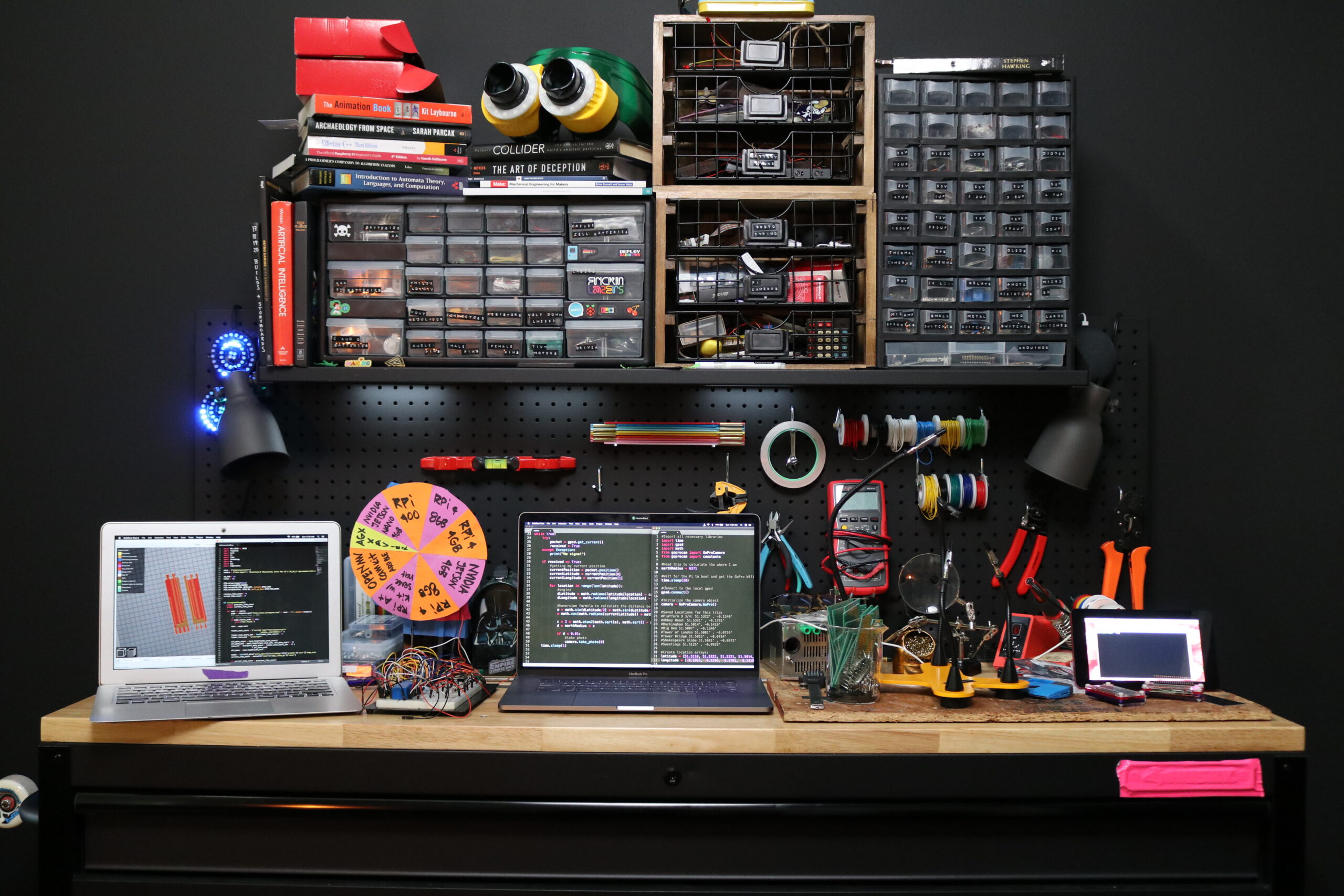
A That’s cool. I liked when you were making the visor for your Daft Punk helmet and it was just a series of Instagram Live videos of you unsuccessfully melting plastic in your oven as you tried to learn how to vacuum-form.
E The plastic melting was so fun, and I learned a lot. I would never do that again, ha ha.
A Of all the projects you’ve made and shared, what has been the thing that you’ve been the proudest of because you managed to overcome an issue?
E I think with most of my projects, I’ve had to overcome something. Except with the Jurassic Park Goggles. Although it was a pain to do, I already knew what I was doing, and that was because of the Daft Punk helmet. I struggled so much with that one that I knew exactly what do to with the goggles.I’ve been working on a smart litter box project for my cats, Teddy and Luna. That one required me to do a lot of woodwork and play with tools that I had never played with before. And so those days terrified me. But, I try to push myself with every project, so they’re all scary.
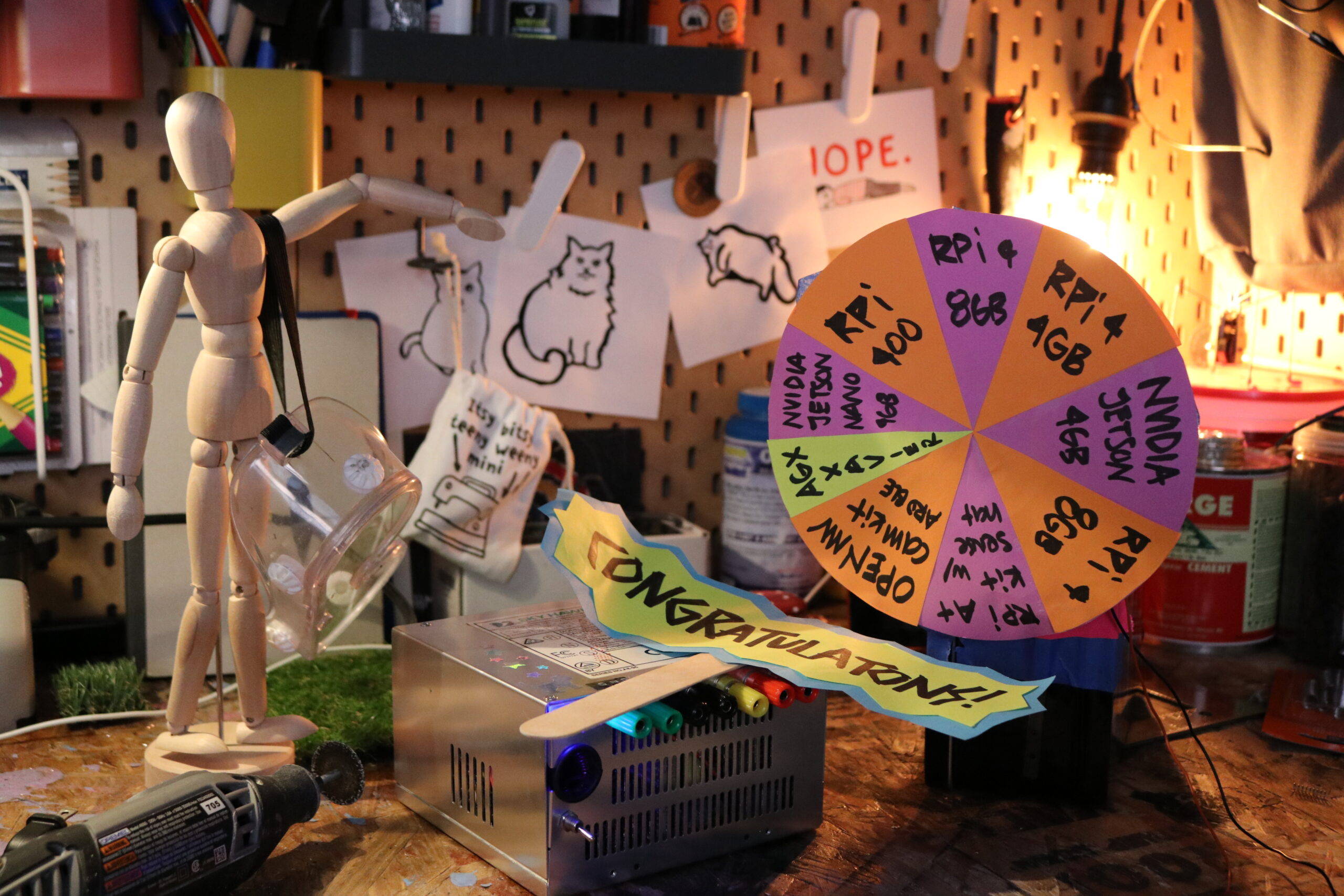
A You have projects that you’ve put your blood, sweat, and tears into, that you’ve worked hard on, that you’ve written all the code for. Where do you stand on whether you should give that code away for free? Do you provide it all the time? Do you ever think, ‘no, I’m going to keep this for myself’?
E Oh, I am a true believer in open source. My plan is to continue to give it all away and put it on my website. This morning, I was finishing up a blog post I’m writing about the Daft Punk helmet. A step-by-step on how to do it, because I know people watch the video, but they might not be able to follow it to make their own. So now I’m going ‘here, here’s what I use’. And all those links in the post, Home Depot, etc., all the links I’m using, they’re not even affiliated. I’m making zero dollars out of that post I’ve been working on.
I know lots of the people who want to recreate my projects are kids, and they have no money. This is the type of education I wish I had had when I was younger. If I had known about this stuff, I would have started when I was very young. So, I can’t charge them. I feel, if they have to buy electronics, there’s no way I can charge extra for the schematic and the code. I cannot do that. It’s about being very conscious of who my audience is. I don’t want to stop them from making it. It’s the opposite. That’s why I do giveaways every week on Instagram Live. I want to give them the boards. I want to give them everything so they can do it. I didn’t have any money growing up, and I know the feeling.
I respect people who want to charge for it. I understand. But I’m not in that boat. Even the smart little box that I’m currently working on, someone who I respect very much said, ‘oh, that’s a great idea, why don’t you patent it and manufacture it? There’s a market for it.’ And I know there’s a market for it, but that’s not the point. The point is to show that you can do it. Anything that’s in your imagination, you can build it, you can do it, and here are the steps. Yeah, I want more money, but I think I can get there in different ways, through YouTube ads and sponsorships.
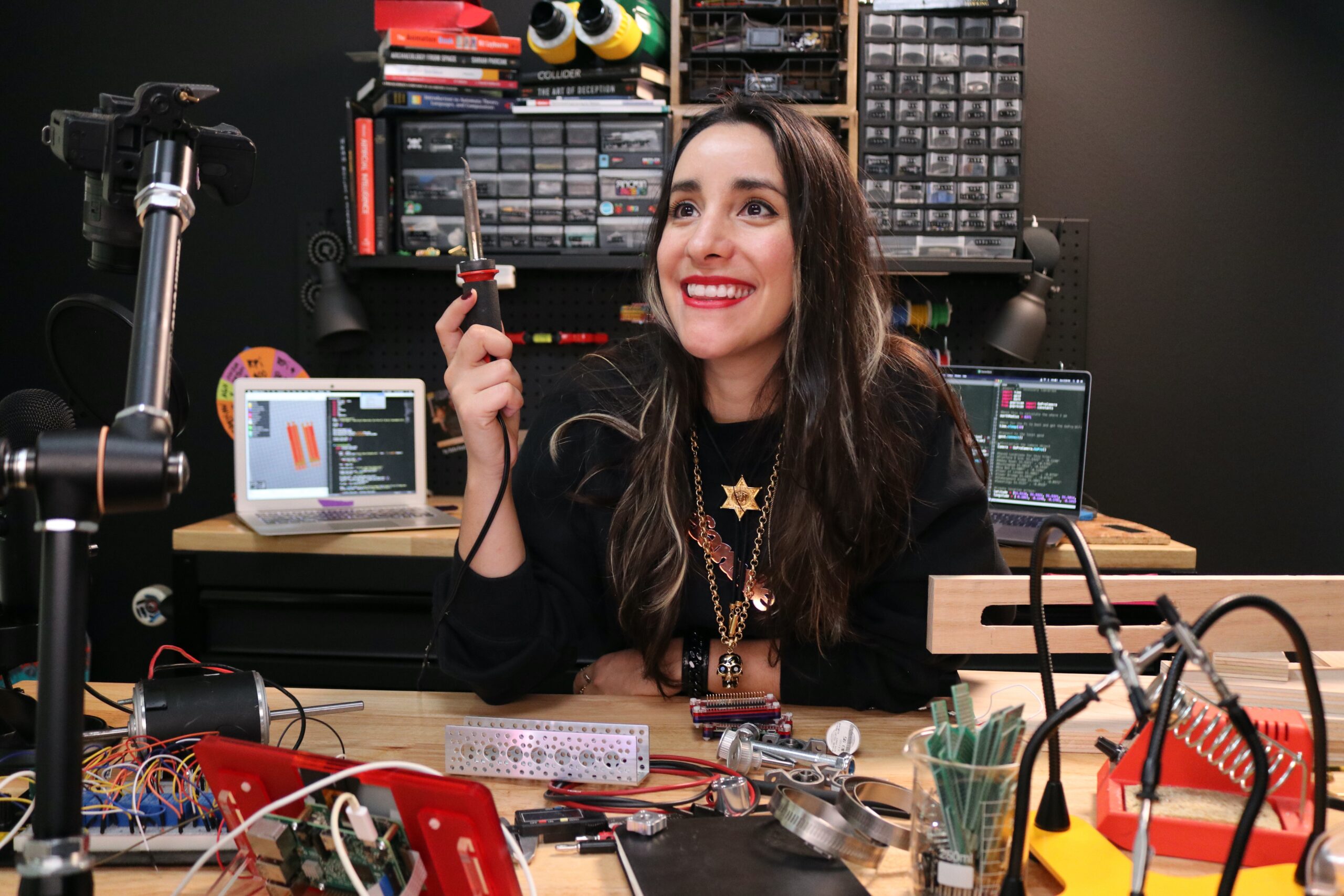
A There are a million different ways to make an LED blink, and none of them is the wrong way, they’re just the comfortable way you find to do it. Do you get backlash when you release your code from people saying, ‘Well, you should have done it this way’?
E I have never received backlash on code and, in fact, I would encourage people not to be scared to publish their code. I know people who say they want to open-source their code but they have to ‘clean it up first’, and they’re scared to publish it. But the whole point of open source is that you put it out there, you know it works, and it’s going to be OK. And it gets better because people will contribute. I’m never afraid of showing code.
A Do you think, when you talk about financial accessibility that that’s one of the reasons that’s holding you back from starting a Patreon? That you’d be putting a financial wall up against people who can’t afford it.
E One hundred percent. I don’t want to add to people’s financial strain. In fact, I am starting my new cryptocurrency so that I can send tokens to people around the world and, kinda like arcade tickets, they can spend them on things.
A How does that work? How can I spend your cryptocurrency?
E OK, so it has zero monetary value. The idea is that instead of giving out imaginary internet points to people in my live streams, they get actual internet points. And they can exchange them back to me for real items. I’ll have a menu of tech – so many points gets you a Pico, or a Raspberry Pi 400, or some other board – and people exchange their internet points for prizes. It helps me see how active someone has been in the live streams so I can say yes, it’s worth the $200 to ship this item to someone in India.
A Ah, I get it. It’s like house points in school.
E This is why it takes me so long to release a video because I’m like, let me do the cryptocurrency and then also that live stream, and then also this video about so and so. I just want to have a voice.
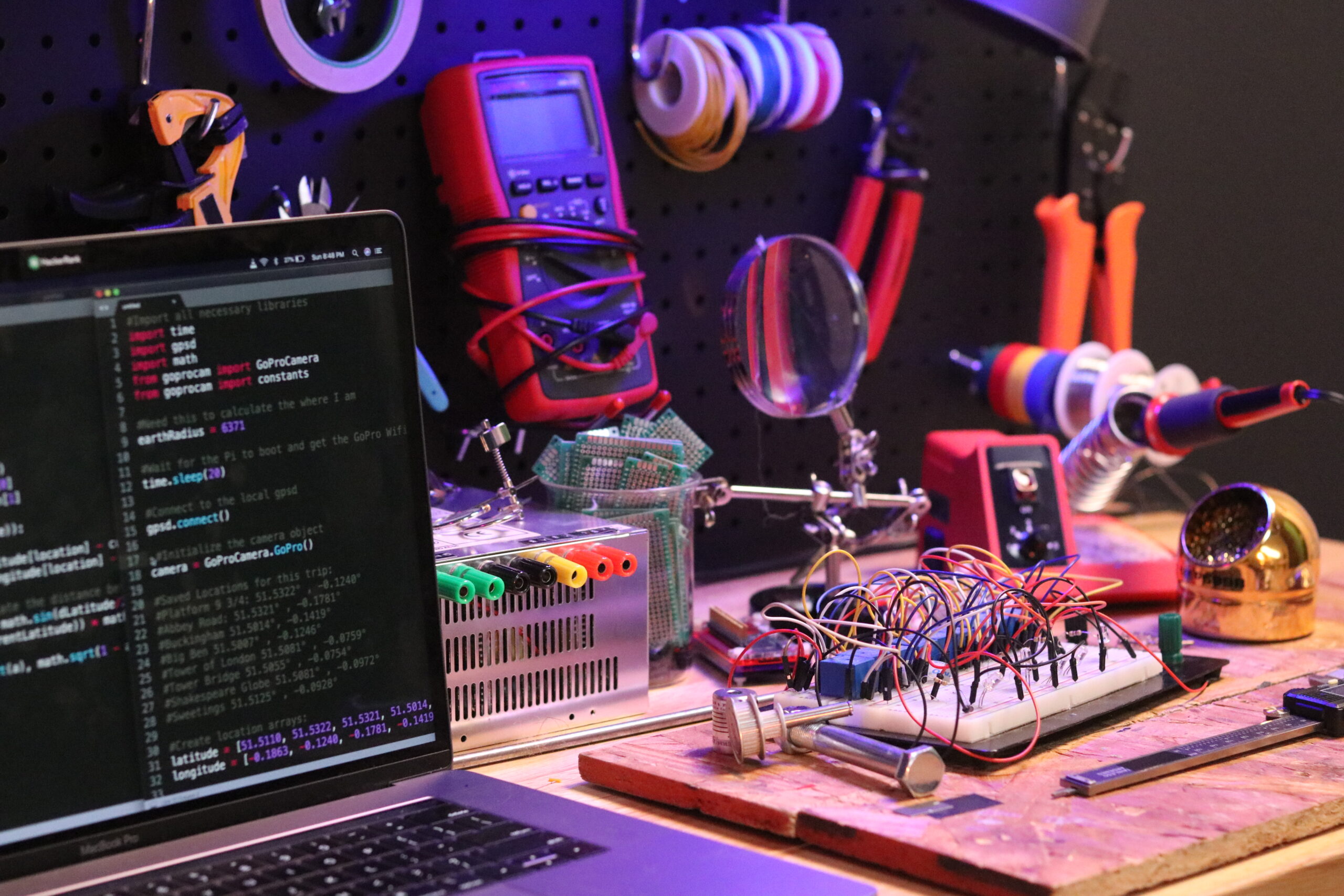
A How do you decide what content to make? Is it just about creating content you think your audience will like? Or more about content you think is important for people to know?
E I think I’ve always made videos that I felt were important, but I was always trying to, y’know, ‘play the algorithm’. And that was happening while I was still working and trying to quit my job so, of course, that was a period of my YouTube career where I was trying as much as I could to get views and hop on trends. Not the trends that were just ‘trends’, but trends by people I liked. Back then, I was a big fan of a YouTube baker, so I did a project using her stuff in the hopes she would see it. But I’m not really like that any more. If I see a channel I really like, I’ll try and do a collab, but not just because it would be beneficial for my channel. None of that any more. Just stuff I like.
One piece of advice that a lot of YouTubers have told me – that I’ve decided not to follow – is that you have to stick to one thing so that the audience knows what to expect. The same with Instagram. But I disagree, and I’ve gained more followers by being myself more. I’m Estefannie who also really, really likes crazy fashion. I like make-up and weird earrings, and why should I have to tone that down? Because I’m an engineer? I only post things that I would like. It’s not always me soldering. It’s not always code.
A You create the content you want to see, not the content you think people want to see.
E Yes. That would be easy to play that game, but that’s not what I want to do.
A A lot of content creators would create a separate Instagram account or YouTube channel for their other passion, but all that’s doing is showing that it has two different audiences. I think, especially when you are a woman in tech, if you then separate out the other things that you like, it’s almost like you’re saying, ‘Oh, well, these are two separate things that can’t exist together.’
E Exactly. You’re saying, ‘I go to work. And I’m a scientist, and I look like this. But then I go home, and I look like this’. And it’s not true. There are some creators who have a million YouTube channels, and I don’t understand why because people really like them for who they are. But it’s following the example of how, if you want to do vlogging, you have to have a separate channel, and I don’t think you necessarily have to.
A You are the brand, and people subscribe to you. You love fashion, and I couldn’t see you doing a ‘come shopping with me down Melrose Place’ video because that’s not who you are, but I could totally see you trying to make your own lipstick.
E Oh, yeah. Oh, yeah.
A You would make that video and your audience would love it because it’s you, and you’re doing something you’re passionate about.
E Yeah, I mean, it’s like, the best example for me is Colin Furze. He is who he is. He wears his tie, he’s great. That’s very transparent. That’s him.There’s a maker who influenced the way I dressed for a bit, and I see it on all the other maker women in how they dress. And I didn’t even like those clothes. And when I noticed, and I stopped myself, and I was like, ‘this is not the Estefannie Experience’. It’s the other person experience, and I don’t need to replicate that because that’s not me. And if I want to wear my giant heels, I’ll wear my heels. You have to be yourself.
If people want to be creators, it’s OK to be yourself. And if you’re the only one and you don’t have a team like other creators, that it’s OK to take your time and not do it for the algorithm. That’s my advice. You don’t have to post every week. I mean, you can, but don’t kill yourself. It’s a one-woman show over here. I do my taxes, I do the website, I do the videos. That’s the advice I want to give here. That’s what I want people to take from this interview.
Subscribe to Estefannie on YouTube, and follow her on Instagram. And make sure to take part in her weekly live streams for a chance to win some exclusive Estefannie Internet Points.
Issue 42 of HackSpace magazine is on sale NOW!
Alex spoke to Estefannie for the latest issue of HackSpace magazine. Each month, HackSpace brings you the best projects, tips, tricks and tutorials from the makersphere. You can get it from the Raspberry Pi Press online store or your local newsagents. As always, every issue is free to download from the HackSpace magazine website.
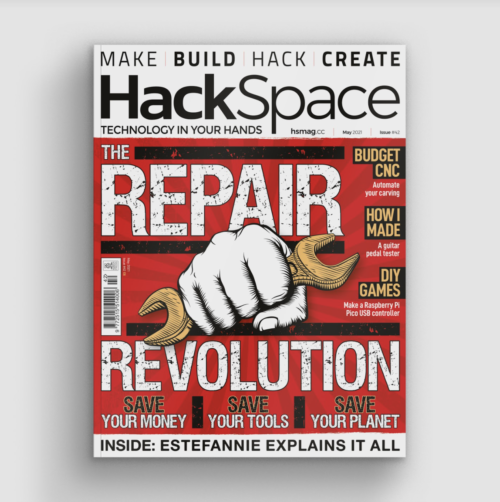
Website: LINK
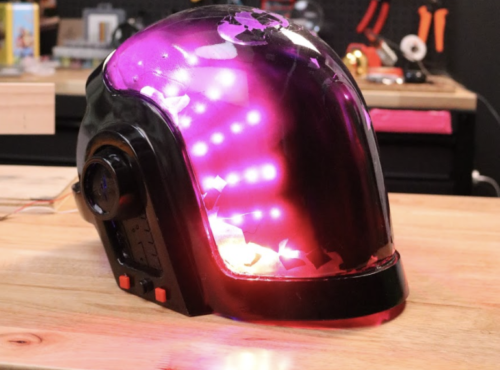
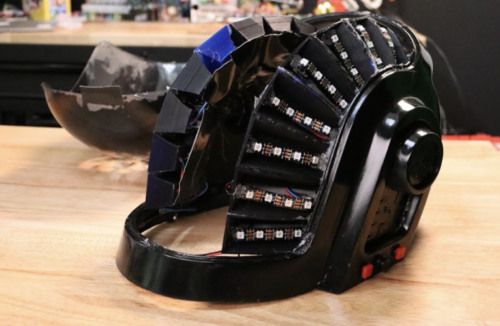
Schreibe einen Kommentar
Du musst angemeldet sein, um einen Kommentar abzugeben.